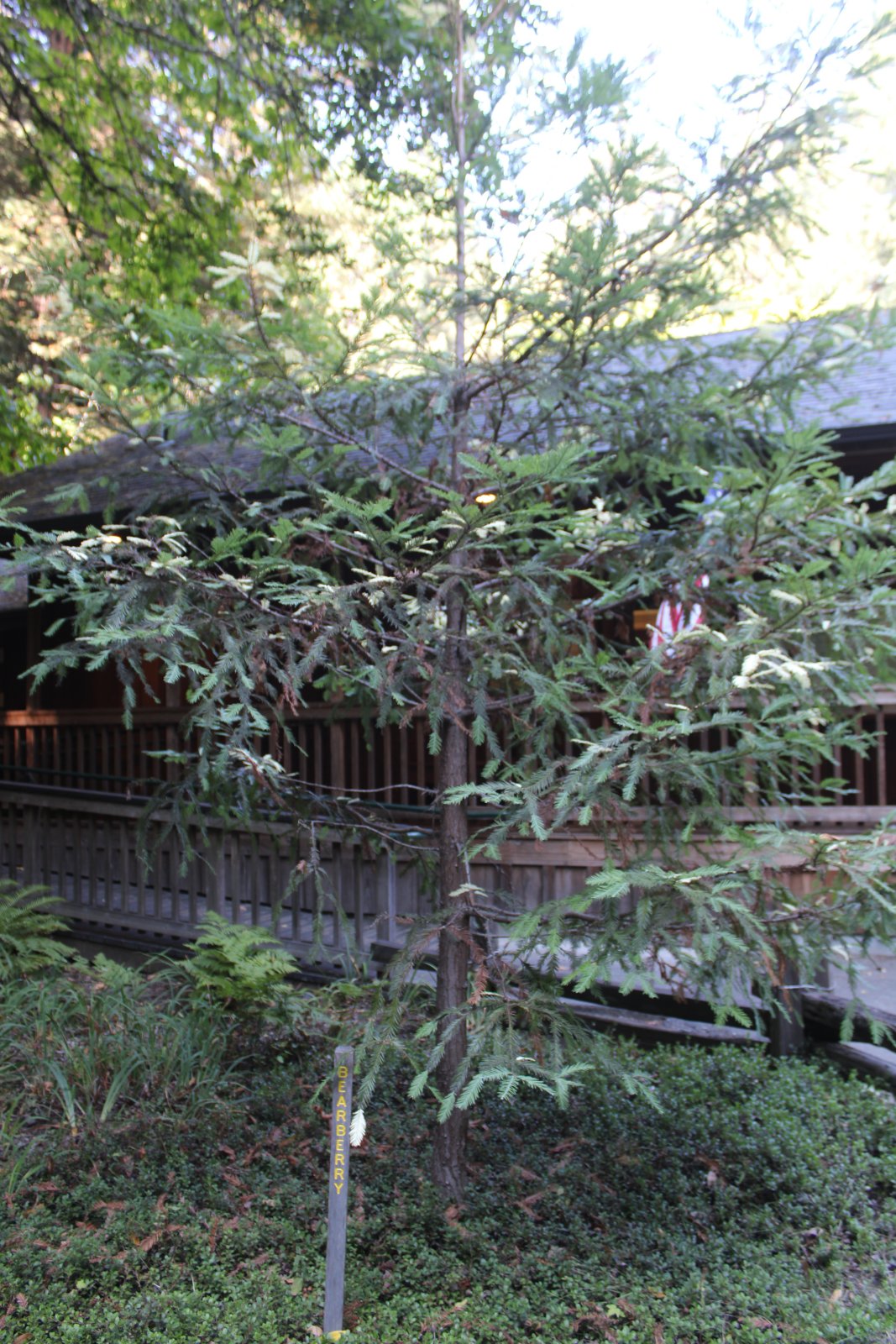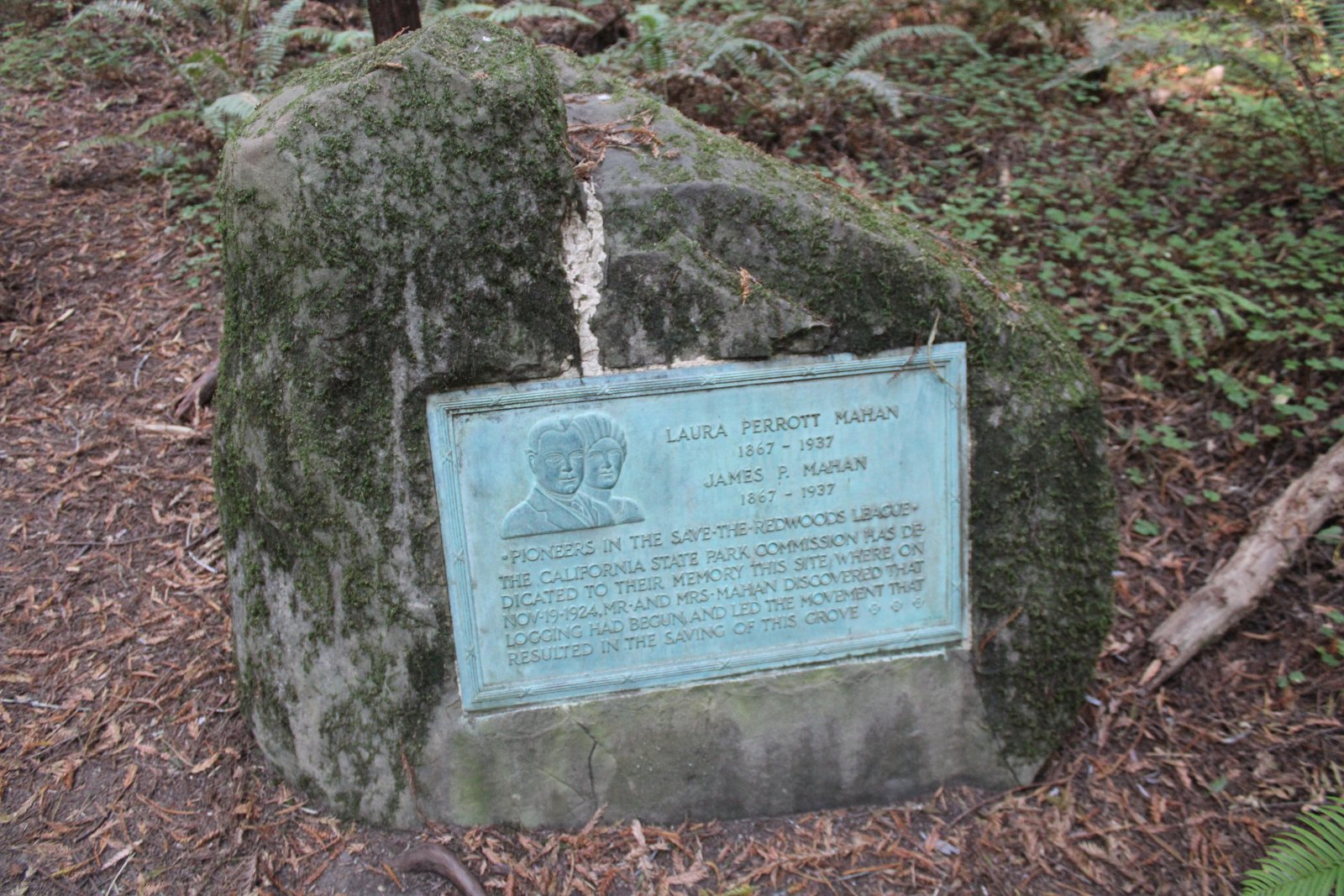August 29, 2023 - NoCali Vacation
Avenue of the Giants
|
|
Leaving the Drive-Thru tree at Leggett, we headed north up 101 until we came to State Highway 254, better known as "Avenue of the Giants". The Avenue of the Giants was originally part of U.S. Route 101 until a freeway bypass was completed on August 27, 1960. The bypass assumed the 101 designation. The Avenue was then designated as CA Route 254. Basically, Highway 101, the South Fork Eel River and Avenue of the Giantsw (H254) all run parallel northwest through the Humboldt Redwoods State Park. The Avenue of the Giants is the scenic route through a giant redwood forest.
It's funny; despite growing up in northern California, I had never heard of the Avenue of the Giants until last spring when my oldest daughter was out here with her family. She mentioned that they hadn't had time to drive through Avenue of the Giants. Not knowing what it was, I looked it up and said "I have to go there someday." For me, AOG would be the highlight of the trip.
|
| |
 |
|
| Much of the Avenue of the Giants looks like this. In many cases, the shoulder is occupied by an eight-foot diameter redwood. Better pay attention while driving and stay on the road! |
| |
 |
|
|
Our first stop was at Stephens Grove.
|
| |
 |
|
| |
| |
 |
|
|
In 1921, the first grove in what would become Humboldt Redwoods State Park was preserved. From 1920 to 1928, the Save-The-Redwoods-League purchased many redwood groves with donations from private citizens. These groves formed the core of the California State Park system, which was created in 1928. Humboldt Redwoods State Park currently emcompasses over 53,000 acres and 140 memorial groves.
|
| |
 |
|
| |
| |
 |
|
|
|
| |
 |
|
| Only 5 percent of the original old-growth coast redwood forest remains, along a 450-mile coastal strip. Most of the coast redwood forest is now young. The largest surviving stands of ancient coast redwoods are found in Humboldt Redwoods State Park, Redwood National and State Parks and Big Basin Redwoods State Park. |
| |
 |
|
| |
| |
 |
|
|
Fairly solid evidence indicates that coast redwoods were the world's largest trees before logging, with numerous historical specimens reportedly over 400 ft. ... Wikipedia
|
| |
 |
|
|
Roughly halfway through the 22-mile drive, we stopped at the Humboldt Redwoods State Park Visitor Center.
In some areas, the Avenue of the Giants the State Park. In those areas could be found the tourist-trap places. There were two more drive-thru trees, a tree house, the "Immortal Tree", and gift shops galore.
|
| |
 |
|
| Cross-section of a redwood that fell in 2006. The cut was about 70 feet above the base. The beginning ring at the center is from 912AD. |
| |
 |
|
| Much gratitude is owed to those individuals and organizations that saved some of the old growth redwoods. |
| |
 |
|
|
Inside the Visitors Center was the amazing "Travel-Log".
In 1917, a vaudeville performer named Charles Kellogg, known for his impeccable imitations of bird songs sung from the throat instead of by whistling, mounted a hollowed-out 11-foot diameter redwood log donated by the Pacific Lumber Company onto the chassis of a Nash Quad truck, and toured the country spreading a message of conservation. The log weighed three tons, and a tunnel had to be dug underneath so that it could be mounted. Kellogg would use the Travel-Log to tour and inform his audiences and the media about the need to conserve the California redwoods.
Kellogg passed away in 1949, and his family and friends kept the Travel-Log stored at his former home until it was donated to the Humboldt Redwoods Interpretive Association in 1995. It would be restored through community efforts and fundraisers in 2000, and the Humboldt Redwoods State Park Visitors Center would be remodeled to house the unique mobile home.
|
| |
 |
|
| |
| |
 |
|
|
|
| |
 |
|
| One of the more unique recreational vehicles you're ever gonna see. |
| |
 |
|
|
The roots of these massive coastal redwoods only go down 12 feet, but interlock with roots of other trees. Life will find a way.
|
| |
 |
|
| Everything you ever wanted to know about the Coastal Redwood. |
| |
 |
|
| Some of the tools used by loggers to fell the massive trees. |
| |
 |
|
|
It took two men two days to fall a redwood. Nevertheless, by the time unrestricted logging of coastal redwoods had ended, approximately 95% of the old growth coastal redwoods were gone. Because of its impressive resistance to decay, redwood was extensively used for railroad ties and trestles throughout California. Many of the old ties have been recycled for use in gardens as borders, steps, house beams, etc. Redwood burls are used in the production of table tops, veneers, and turned goods.
Coast redwood is one of the most valuable timber species in the lumbering industry. Coast redwood lumber is highly valued for its beauty, light weight, and resistance to decay. It is still logged today, but virtually all of it is second growth.
|
| |
 |
|
|
|
| |
 |
|
|
This 3-D map shows how Humboldt Redwood State Park sits down in a valley formed by the South Fork Eel River. .
|
| |
 |
|
| There are three types of redwoods: the Coastal Redwood, Giant Sequoia and Dawn Redwood (China). An example of each was outside the Visitors Center. |
| |
 |
|
| The Coastal Redwood. |
| |
 |
|
|
|
| |
 |
|
| The Giant Sequoia. They occur naturally only in groves on the western slopes of the Sierra Nevada mountain range of California. Lynnette and I have seen them in the Mariposa Grove, Yosemite National Park. We're hoping to see some more in 2024 when we visit Sequoia National Park |
| |
 |
|
| An Albino redwood. These are mutants that cannot manufacture chlorophyll. |
| |
 |
|
| The river runs through it; the South Fork Eel River, that is. |
| |
 |
|
|
We stopped at the trailhead for the Mahan Loop Trail which we hiked. We then crossed over to the Founders Grove Loop Trail where we saw the amazing Dyerville Giant and the Founds Tree.
|
| |
 |
|
| The trail is named after Laura and James Mahan who in 1924 were able to persuade the Pacific Lumber Company not to log this area until the Save-the-Redwoods League could purchase the land. |
| |
 |
|
|
Lynnette and Joe looking at each other through the trunk of a fallen redwood.
|
| |
 |
|
| Despite this rather large split in its base, this redwood still lives. |
| |
 |
|
| Yay, Redwoods! |
| |
 |
|
| Hiking through the redwood forest. |
| |
 |
|
| A fallen giant. |
| |
 |
|
|
Interesting that husband and wife were born in the same year and died in the same year.
|
| |
 |
|
| Hiking the loop trail. |
| |
 |
|
| P |
| |
 |
|
| |
| |
 |
|
A violent, shattering end to this redwood.
|
| |
 |
|
|
|
| |
 |
|
| Growing up at an angle doesn't seem to have harmed this redwood. |
| |
 |
|
| Ferns seem to do well in the redwood forest; the forest floor was covered in them. |
| |
 |
|
|
We finished the Mahan Loop trail and headed over to the Founders Trail. On the way we encountered the Dyerville Giant, which fell down in 1991. It looks like the side of a U.S. Navy destroyer. Until it fell in March 1991, the "Dyerville Giant" was the record holder as the world's tallest living organism. Before it fell, it stood 372 ft high and was estimated to be 1,600 years old.
|
| |
 |
|
|
Lynnette and Joe at the base of the Dyerville Giant.
|
| |
 |
|
| |
| |
 |
|
|
|
| |
 |
|
| One of the most famous trees in the park: the Founders Tree. |
| |
 |
|
|
Yep, it's a big and tall one.
|
| |
 |
|
| The Founders Tree top is outta sight! |
| |
 |
|
| Enough said. |
| |
 |
|
|
|
| |
 |
|
|
We stopped to check out the South Fork Eel River.
|
| |
 |
|
|
It was getting late when we arrived at the trailhead of the Drury-Chaney Grove trail.
|
| |
 |
|
|
It was getting dark so we just hiked in a quarter mile or so and then came back. But it was beautiful, walking through a sea of ferns and massive trees.
Avenue of the Giants blew me away. I'd like to come back someday and spend a week hiking among the giant redwoods.
|
| |
 |
|
| |
| |
|
|
|
|
|
|























































